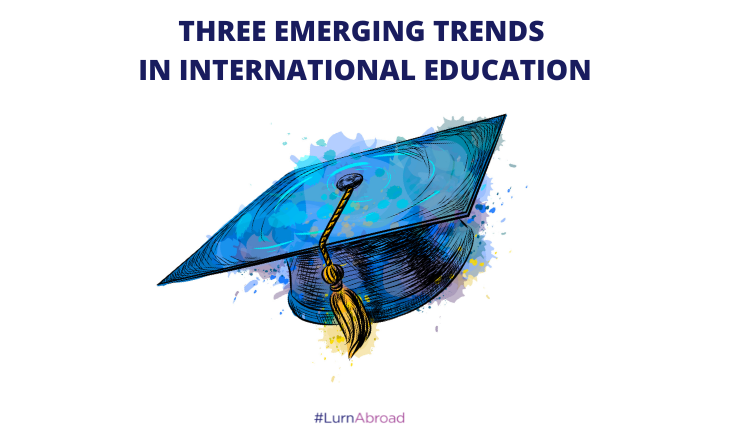According to a recent industry report, a total of 5 million students go abroad to study each year, of which 2.5–3 million traditionally choose Anglophone (English-speaking) countries. However, this trend is already witnessing a change in the post-pandemic world. Here are three significant changes being witnessed in the international education sector as the pandemic wanes and international student mobility gains momentum.
ASIA, TRADITIONALLY A SOURCE MARKET, IS GAINING GROUND AS A STUDY-ABROAD DESTINATION
Asia has long been the largest source market for international students. Over 1 million Chinese students are enrolled overseas, followed by India with over half a million enrolments. Other Asian countries such as South Korea, Taiwan, Indonesia, Bangladesh and Vietnam also send a significant number of students abroad.
It is predicted that by 2030, universities globally will see over 7 million international enrolments each year, and students from Asia will continue to dominate the demand for international education. In 2020–21 alone, 70% of the United States foreign student population of 914,000 came from Asia.
Interestingly, however, there is also a reverse trend in the making. An increasing number of students are looking eastward in search of affordable college degrees and lower costs of living. In recent years, more Asian universities are making it to global university rankings and are attracting applications from the world over.
The Philippines, for example, hosted over 14,000 international students in 2021, including from the US, India and Nigeria. In 2020, India hosted over 49,000 foreign students, who came from all continents.
In addition, several internationally recognised universities have set up campuses across Asia, including New York University, James Cook University, Ivey Business School, George Mason University and Temple University.
These developments provide wider choices to Asian students wanting to stay closer to home and to non-Asian students keen on a wholesome study abroad experience at a lower cost.
STUDENTS ARE INCREASINGLY LOOKING BEYOND POPULAR DESTINATIONS
While the USA, UK, Australia and Canada have been the preferred study-abroad destinations for decades, now more than ever students are looking at other countries that offer affordable yet high-quality higher education. Recently, the key determinants in choosing the country of study include the country’s response to the pandemic, tuition fees, availability of in-person classes, ease of mobility, and post-study work opportunities.
Gen Z students want access to multiple options so that they can choose a programme that will fit their education budget and ensure future employability. As students become pickier with their choices, niche courses and ease of admission are gaining preference over university reputation. Many students want to stay back and work in the country of study, and therefore post-study work permit is also an important factor in the selection process.
While the big four will continue to receive the greatest pie of international students, other emerging alternative destinations include Dubai, Germany, Spain, Turkey, Israel, South Africa, Russia, India, Singapore, China and Japan.
INTEREST IS RISING IN UNCONVENTIONAL DEGREE PROGRAMMES
In terms of fields of study, Business and Management remains the leading choice, followed by Engineering, Medical Studies, Mathematics and Computer Sciences, Humanities, and Social Sciences. However, after the pandemic allied professions have seen an increase in demand, and hence there is an increased interest in courses in Health, Health Tech, Biomedical and related subjects.
With increased awareness of global challenges, students are looking at unconventional degrees that will not only pave the path to a successful career but also help them make a difference in the world. These include Environmental Sciences, Sustainability Studies, Agriculture Technology, Bioinformatics, Ecotechnology, Cybersecurity, Ethical Hacking, Game Design & Development, Cultural Studies, Filmmaking, and International Relations to name a few.
In addition, short-term courses, delivered online, are also in great demand, as they offer students an opportunity to explore a subject before committing to a full-time degree programme. Today, over 50,000 free or paid MOOCs (massive open online courses) are available on various platforms, including from the world’s top universities.
With over 4.6 million enrolments, Machine Learning by Stanford University remains the most popular MOOC of all time.

If you are considering studying abroad why don’t you discuss your prospects and opportunities with experts at Lurnable’s dedicated study abroad counselling division LurnPathways?












